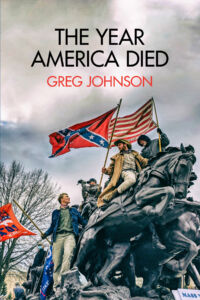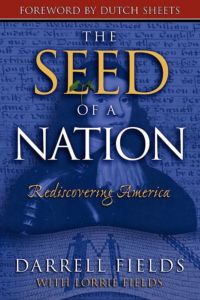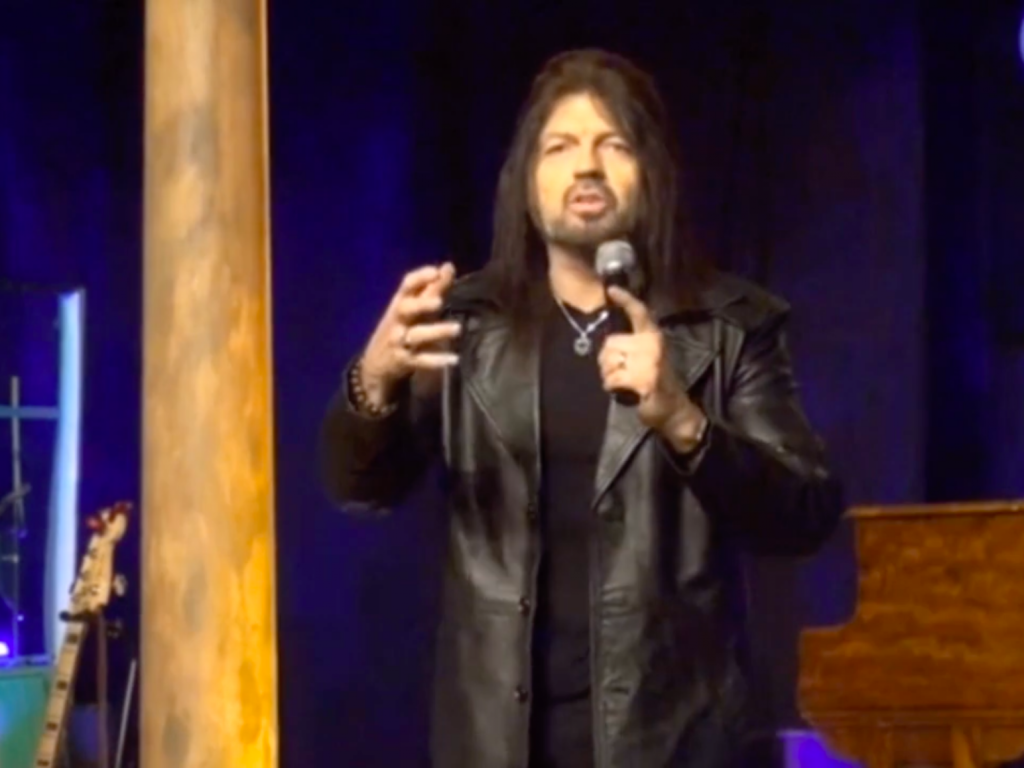The Ongoing Revolution in American Protestantism
Darrell Fields
The Seed of a Nation: Rediscovering America
Garden City, N. Y.: Morgan James Publishing, Inc., 2008
There is an ongoing revolution in American Protestantism which is worth examining: the New Apostolic Reformation (NAR). The NAR is an outgrowth of the Pentecostal Denomination which developed in Los Angeles during the 1906 Azuza Street Revival. Simply put, Pentecostalism’s difference from other branches of Christianity is the theological idea that the events described in The Acts of the Apostles are prescriptive rather than descriptive. A prescriptive view of Acts means that ordinary Christian believers in the here and now can and should experience personal interactions with the Holy Spirit, as well as speaking in tongues and other miracles as described therein. Christian theology prior to this interpretation saw the events in Acts as descriptions of historical, one-time affairs. This theological concept is carried forward in the New Apostolic Reformation.
Origins and growth
The NAR’s initial concepts were developed by Charles Peter Wagner, an American missionary to Bolivia. When he returned to the United States in 1971, he popularized the concept of “spiritual warfare,” a type of conflict where humans battle unseen evil forces. The idea isn’t entirely new to Christianity, but prior to the late 1980s the belief was not widely accepted within modern American Protestantism. Wagner also sought to mix religion with politics in order to establish the Kingdom of Christ on Earth through the works of man. This goal is not new in American culture. Massachusetts, Connecticut, and Pennsylvania were established with the intent of developing Christian utopias, for example.
The New Apostolic Reformation also has prophets and apostles within its ranks. An apostle was — or is, according to the NAR — a person who has seen Jesus Christ after the resurrection, was — or is — commissioned by the Holy Spirit to preach the Gospel, and can perform miracles. In Acts, the apostle who replaced Judas was also required to have known Jesus during his ministry. Presumably, a modern apostle in the NAR would experience Jesus Christ in a vision or in a spiritual way, such as how the Apostle Paul saw him on the Road to Damascus.
NAR adherent follow an array of modern prophets. Many of them can be seen on the Elijah Streams website. One of their most popular prophets is Robin Bullock. His prophecies are a bit of a gimmick, more fortune telling than pointing out an uncomfortable truth about society. He also explains how various Bible verses apply to ongoing events over background music. Bullock has a Southern Fried Rock look: long hair, leather jacket, chain necklace, and so on.
In January 2023, Bullock made a vague prediction about a submarine which his followers believe applies to the recent Titan submarine disaster. While there is a great deal of gimmickry around Bullock’s messages, he has a solid grasp of theology and is extremely ecumenical. He points out the good things within the Roman Catholic Church as well as other Protestant denominations. NAR-aligned churches are today drawing their membership from both Catholics and Protestants.
The prophets are the weak point in the New Apostolic Reformation, however. There is a limit to how much comfort vague predictions can provide when real sorrows arrive. Additionally, it is too easy for skeptics to detect the sleight-of-hand tricks used by the prophets. Eventually a prophet will get his act wildly wrong, and consequences will follow.

You can buy Tito Perdue’s The Philatelist here.
The NAR has started to influence politics, and there is no reason to believe that this movement will dissipate anytime soon. Its believers supported President Trump, and they remain convinced that the 2020 election was fraudulent. One of their members, Doug Mastriano, unsuccessfully ran for Governor of Pennsylvania in 2022. Despite his defeat, Mastriano remains in the Pennsylvania State Senate. Mainstream liberals have already profiled the NAR under the moniker of “Christian Nationalism.”
Another personality in the movement is Dutch Sheets. Sheets has had a wildly successful ministry and has published many books on religious and social matters. He has also made the Pine Tree Flag, alongside the slogan “An Appeal to Heaven,” a symbol of the NAR. Sheets wrote that “the Appeal to Heaven flag holds great significance as it relates to the founding of our nation, God’s eternal covenants, and our present hope for America.”
Sheets was inspired to use this flag after he received it at an event in 2013 from a US Army officer who had recently returned Afghanistan. Afterwards he wrote:
As this Army Captain unfurled the flag, I felt the presence of the Lord come on me very strongly. Though I was seeing this flag for the first time, it confirmed and amplified a revelation God began giving me over a decade ago. I sensed its weighty significance. Little did I know, however, this flag would also represent God’s next great assignment for my life, searing upon my heart the same cry He birthed within the hearts of the Revolutionaries at the founding of our great nation.
The Pine Tree Banner is a historic flag of the American Majority ethnic group. It is not a flag with a universalist meaning, such as other flags within Christendom. The adoption of this flag connects a unique brand of Christianity to a specific people. Liberals are thus correct when they label the NAR “Christian Nationalism.”
Proponents of the NAR have also translated their own version of the Bible called The Passion Translation. It has been condemned by many Biblical scholars and was removed from the website Bible Gateway in 2022. Those in the NAR see this as an attack on their freedom of conscience. Nevertheless, banning a translation of the Bible and persecuting its translators has a long history. William Tyndale was burned at the stake for translating the Bible into English in 1536, and the Geneva Bible was decried by the rstablishment of its day due to its political overtones.
America’s holy experiment
Perhaps the most important thinker in the NAR is the late Darrell Fields. Although Fields looks white, he is a member of the Cherokee Nation. He wrote a tightly-argued book called The Seed of a Nation in 2008. In it he points to Lord William Penn and the Colony of Pennsylvania as the true spiritual founding of America and the keystone of the whole society. He describes how Penn became a Quaker and founded Pennsylvania with help from his family’s extensive connections to King Charles II.

A map of the Delaware River Valley in the late seventeenth century. This region is the cultural heartland of America’s Midlands culture.
Fields believes that America’s problems arise out of the “sin” of Pennsylvania whites breaking a covenant with the Amerindians, especially the agreement between William Penn and the Delaware tribe, the Treaty of Shackamaxon, that was signed in 1682. Fields calls this covenant The Great Treaty.
From a religious standpoint, The Great Treaty’s end was like the breach of the covenant between the Israelites and Gibeonites which is first mentioned in Chapter Nine of The Book of Joshua. King Saul ended the covenant when he attacked the Gibeonites in the First Book of Samuel. As a result of this breach, God punished the Kingdom of Israel with a three-year famine described in the Second Book of Samuel:
Then there was a famine in the days of David three years, year after year; and David inquired of the LORD. And the LORD answered, It is for Saul, and for his bloody house, because he slew the Gibeonites. (2 Samuel 21:1 KJV)
It is also quite possible that Saul’s war against the Gibeonites was just, and therefore King David was blaming the economic downturn on his predecessor. The true King David was a Machiavellian schemer, indeed.

Darrell Fields believes the agreement between Lord William Penn and the Delaware Indians was a sacred covenant, such as that between the Israelites and the Gibeonites.
Fields writes:
Native Americans were the host people of America — the original keepers of the land. They still are America’s First Nations. They stood at the forefront of the American frontier and yet we came to them assuming we were the hosts, giving them “right of passage.” How could this be freedom? Our example of liberty was grossly misrepresented. How completely illogical! (p. 207)

Darrell and Lorrie Fields (from Seed of a Nation)
The Amerindian Question
The idea of a white-red racial reconciliation is so powerful within the NAR that during worship services and meetings, genuine Amerindians who are sympathetic to the movement come and declare the covenant between American whites and Indians restored.
Nonetheless, this theological concept about Indian treaties is questionable. If Lord William Penn’s holy experiment in Pennsylvania is akin to the Israelites colonizing Canaan, then Fields leaves out several important Biblical passages. The most important one is in The Book of Exodus. As the Israelites march on Canaan, God says:
I will send my fear before thee, and will destroy all the people to whom thou shalt come, and I will make all thine enemies turn their backs unto thee. And I will send hornets before thee, which shall drive out the Hivite, the Canaanite, and the Hittite, from before thee. I will not drive them out from before thee in one year; lest the land become desolate, and the beast of the field multiply against thee. By little and little I will drive them out from before thee, until thou be increased, and inherit the land. And I will set thy bounds from the Red sea even unto the sea of the Philistines, and from the desert unto the river: for I will deliver the inhabitants of the land into your hand; and thou shalt drive them out before thee. Thou shalt make no covenant with them, nor with their gods. They shall not dwell in thy land, lest they make thee sin against me: for if thou serve their gods, it will surely be a snare unto thee. [My emphasis] (Exodus 23:27-33 KJV)
Thus, the divine instructions in Exodus are not to make a covenant, but are instead kill or remove the Canaanites. Moreover, the covenant with the Gibeonites was the result of a Gibeonite ruse, which might have invalidated the treaty. Thus, from a prescriptive interpretation of Exodus, Pennsylvania’s policy of killing and removing Amerindians during the French and Indian War and Pontiac’s Rebellion was in line with Biblical teachings. In a descriptive theological interpretation, the reading above is only about ancient Israelites and Canaanites and has no relationship to Pennsylvania or America.

You can buy Greg Johnson’s The Year America Died here.
Additionally, the Amerindians themselves did not live in a holy experiment. The Aztecs were ripping human hearts out of chests for sacrifices. The Iroquois were killing and eating their captives’ children. The Pequod were a menace in Connecticut, and King Philip later attacked New England whites with no clear strategy or goals. Thus, if one is drawing analogies between ancient Israel and Pennsylvania, the Amerindians are the ones passing children through fire, setting up Asherah Poles, and following Baal.
Perhaps the breaking of the covenant between the Pennsylvanians and the Delaware was a sinful violation, but the other tribes were clearly making trouble. Calling the breakdown of white-red relations an original sin and then declaring those relations restored also means that any Amerindian can go to an NAR meeting and declare that the Holy Spirit says that the covenant has been broken again — and all manner of ugly drama might follow. The idea of a covenant is a snare, indeed.
This theological problem is not unlike that of the Christian philosopher Francis Schaeffer, who described the problems of his day as resulting from the Line of Despair being crossed by the philosopher Søren Kierkegaard. But according to the Bible, Original Sin took place thousands of years prior to William Penn’s treaty and Francis Schaeffer’s critique of existentialism.
Christian Nationalism
Putting what it says about the Amerindians aside, The Seed of a Nation is notable for several positive things. First, it traces the NAR and its emphasis on a “chosen” American people (i.e., Christian Nationalism) back to Pennsylvania’s Quaker folkways. This is clear time and time again in America’s historical record. When the Quakers and their Midland relatives decide upon a thing, the rest of the country eventually follows.
For example, the Quakers were initially drawn to Communism, but they also later led the way in turning American society away from that ideology, partially through religious explanations. The Quaker Whittaker Chambers basically said that Marxism-Leninism was in fact the second-oldest faith, first proclaimed in the Garden of Eden with the words of temptation, “Ye shall be as gods.” Additionally, by believing that American Majority whites are actors in a divine plan, it will be eventually become clear from a religious perspective that laws such as the 1964 Civil Rights Act are morally wrong.
By putting the founding of Pennsylvania at the center of their movement, those in the New Apostolic Reformation are separating themselves from the modern nation of Israel and Christian Zionism. This means that future appeals by the Israel Lobby to plunge America into another Mideast morass will be much harder to successfully make, if NAR-aligned Christion Nationalists are involved in the political process.
The fact that the book was published in 2008 fortifies this idea. That was when it became widely known that it was Christian Zionist theology that had helped bring about the Iraq War. Members of the NAR might also be quietly counter-Semitic. Doug Mastriano, for example, was accused of anti-Semitism during his campaign to become Pennsylvania’s Governor.
The Seed of a Nation contains no eschatology. By not mentioning the Rapture, The Seed of a Nation, is unmoored from the idea that all will be made well by the Second Coming of Jesus Christ. This shift in focus means that a large part of American Protestantism will be focused on events in the real world and on creating practical solutions to its problems.
Fields also discusses Nehemiah, the man who rebuilt the walls of Jerusalem. He writes:
It is God’s desire for us to be a people who, like the people of Nehemiah’s day, rehang the gates and rebuild the walls of our lives. If we do this, then we will deny the enemy access. For as a people are healed and changed, so is the family or nation of these people. (p. 240)
The passage can be seen as a symbolic, New Agey “walls of our lives” statement, or it can be taken to mean that we should literally defend the borders of the American holy experiment and resist the Great Replacement.
The book also passes over several other things that are important. Just as Josiah Strong’s book Our Country, The Seed of a Nation completely ignores sub-Saharan issues. This is a remarkable, since Christian thought is usually dripping with Negro-Worship. By focusing on white-red issues and declaring the covenant between American Majority whites and Amerindians restored, the New Apostolic Reformation offers salvation from the white guilt that is so prevalent in the presently dominant semi-religious ideology of “civil rights.”
The focus on Amerindians and Pennsylvania in the NAR also shows that the “civil rights” movement is past its prime. “Civil rights” requires all of America to dance to the tune called by a low-IQ minority with many social pathologies. That situation is unstable. While “civil rights” appears all-powerful today, unstable institutions usually come apart when they appear to be most dominant.
What we see in The Seed of a Nation is a theological and metapolitical sea change in American Protestantism. The movement is still new and growing, and while its focus on Amerindians and prophecy is problematic, it is a far better form of the Religious Right than the one that elected George W. Bush in the 2000s.
* * *
Like all journals of dissident ideas, Counter-Currents depends on the support of readers like you. Help us compete with the censors of the Left and the violent accelerationists of the Right with a donation today. (The easiest way to help is with an e-check donation. All you need is your checkbook.)
For other ways to donate, click here.






